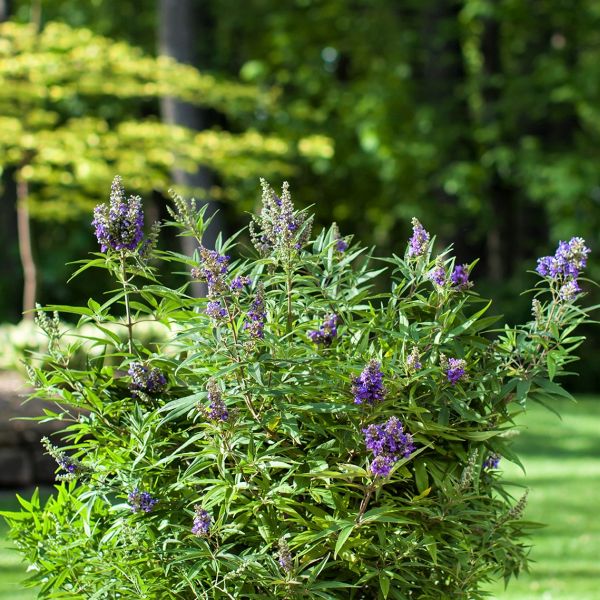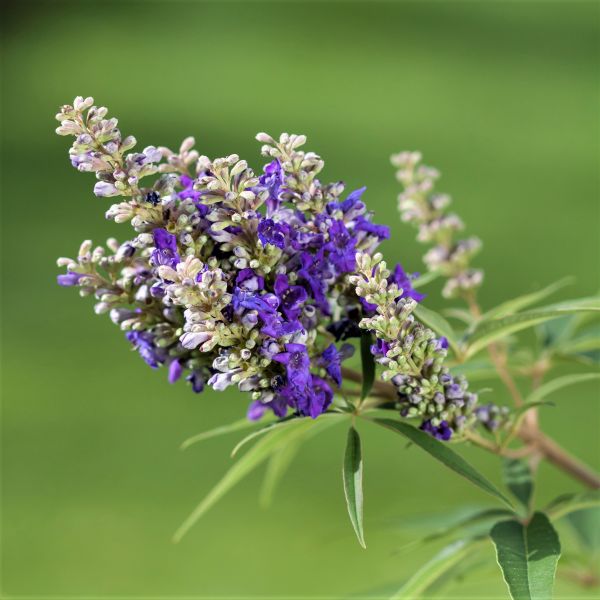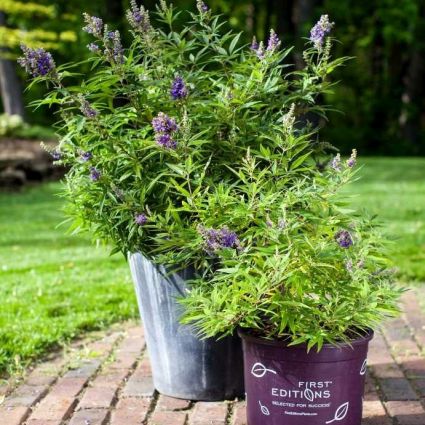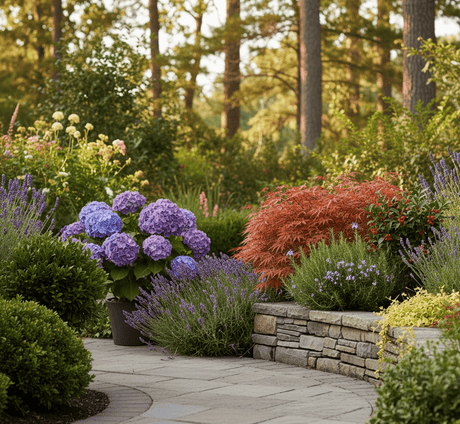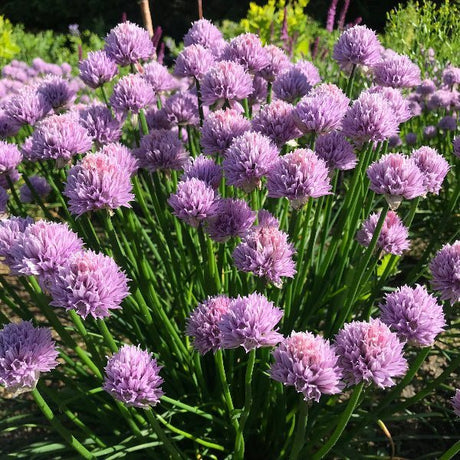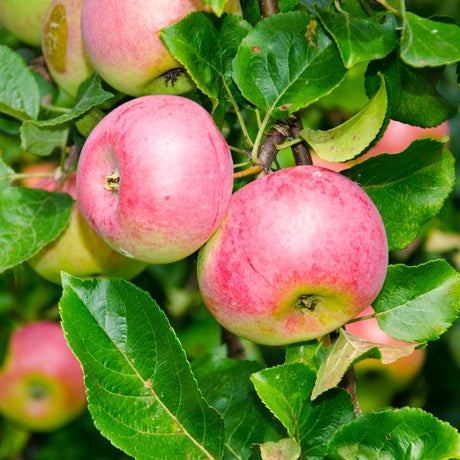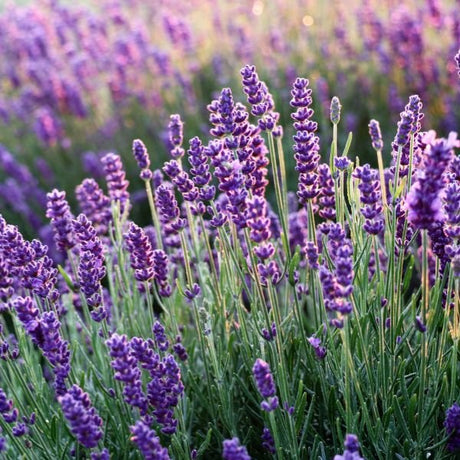Blue Puffball™ Chaste Tree
Vitex agnus-castus 'PIIVAC-Il'
- Stay Protected with Plant Sentry ™
Blue Puffball™ Chaste Tree - #1 Container is backordered and will ship as soon as it is back in stock.
Plant Sentry™
Plant Sentry™

Plant Sentry™ Protected
Your order is protected by our compliance system that:
- Prevents restricted plants from shipping to your state
- Ensures plants meet your state's agricultural requirements
- Protects gardens from invasive pests and diseases
Delivery and Shipping
Delivery and Shipping
Delivery and Shipping
Fast, Safe Plant Delivery
Ships in 3-4 business days • Tracking provided • Weather protected
| Under $50 | $9.99 |
| $50 - $99.99 | $14.99 |
| $100 - $149.99 | $16.99 |
| $150+ | $24.99 |
✓ Zone-specific timing • ✓ Professional packaging • ✓ Health guarantee
Understanding Plant Options
Nature Hills offers plants in two main formats:
- Container Plants: Grown in pots with soil, sized by container volume and plant age
- Bare Root Plants: Dormant plants without soil, sized by height measurements
Container Plant Sizes
Container sizes indicate plant age and growing capacity rather than liquid volume equivalents. Our containers follow industry-standard nursery "trade gallon" specifications, which differ from standard liquid gallon measurements.
Young Plants (6 months to 18 months old)
| Container Size | Actual Volume | Metric Equivalent |
|---|---|---|
| 2" x 2" x 3" | 0.18 - 0.21 dry quarts | 0.20 - 0.23 dry liters |
| 4" Container | 0.31 - 0.87 dry quarts | 0.35 - 0.96 dry liters |
| 4.5" Container | 0.65 dry quarts | 0.72 dry liters |
| 6" Container | 1.4 dry quarts | 1.59 dry liters |
| 1 Quart | 1 dry quart | 1.1 dry liters |
| 5.5" Container | 1.89 dry quarts | 2.08 dry liters |
Established Plants (18 months to 2.5 years old)
| Container Size | Actual Volume | Metric Equivalent |
|---|---|---|
| 2 Quart | 2 dry quarts | 2.2 dry liters |
| #1 Container | 2.26 - 3.73 dry quarts | 2.49 - 4.11 dry liters |
| 5" x 5" x 12" | 3.5 - 4.3 dry quarts | 3.85 - 4.74 dry liters |
Mature Plants (2-4 years old)
| Container Size | Actual Volume | Metric Equivalent |
|---|---|---|
| #2 Container | 1.19 - 1.76 dry gallons | 5.24 - 7.75 dry liters |
| #3 Container | 2.15 - 2.76 dry gallons | 8.14 - 12.16 dry liters |
Large Plants (3-5 years old)
| Container Size | Actual Volume | Metric Equivalent |
|---|---|---|
| #5 Container | 2.92 - 4.62 dry gallons | 12.86 - 20.35 dry liters |
| #6 Container | 5.25 - 6.01 dry gallons | 23.12 - 26.42 dry liters |
| #7 Container | 5.98 - 6.53 dry gallons | 26.34 - 28.76 dry liters |
Bare Root Plants
Bare root plants are sold by height from the root system to the top of the plant. Plants may exceed minimum height requirements.
Common Sizes:
- Trees: 1 foot, 2 feet, 3 feet, 4 feet, 5 feet, 6 feet
- Shrubs & Perennials: 1 foot, 18 inches, 2 feet
Important Notes
Container Volume Specifications
- Trade Gallon Standard: Our containers follow industry-standard "trade gallon" specifications established by the American National Standards Institute (ANSI Z60.1) for nursery stock
- Volume Variations: Actual soil volume may vary due to plant root systems and growing medium settlement
- Age Indicators: Container size primarily indicates plant age and maturity rather than liquid volume equivalents
Growing Conditions
- Plant size can vary based on variety and growing conditions
- Container size helps indicate plant maturity and establishment level
- Larger containers generally mean more established root systems and faster landscape establishment
Seasonal Availability
- Bare root plants are available seasonally when dormant
- Container plants are available throughout the growing season
- Specific varieties may have limited availability in certain sizes
Questions?
For questions about specific plant sizes or availability, please contact our plant experts who can help you choose the right size for your landscape needs.
Plant Highlights
Blue Puffball™ Chaste Tree highlights at a glance!
-
Plant Class
-
Botanical Name
-
Brand
-
Growing Zones6, 7, 8, 9
-
Growth RateModerate
-
Mature Height
-
Mature Width
-
Leaf Color
-
Flower Color
-
Fall Color
-
Pollinator FriendlyYes
-
Bloom PeriodEarly Summer, Late Summer, Early Fall, Late Fall
-
FragrantYes
Characteristics
Where To Plant
When To Prune
- Late Winter
Water & Moisture Needs
- Low
Sunlight Needs
Soil Needs
- Well-Drained
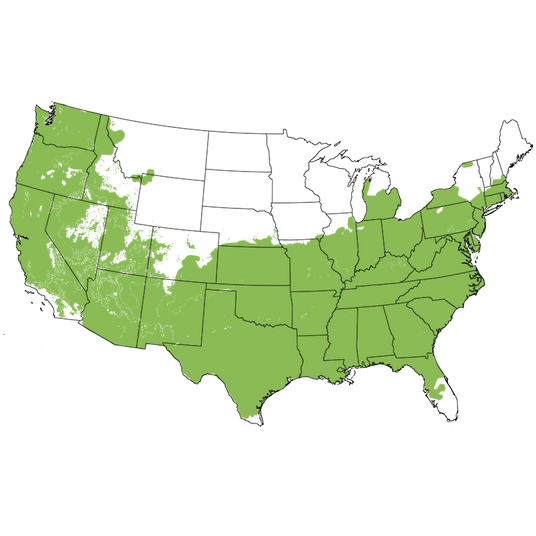
Growing Zones 6-9
Blue Diddley Chaste Tree
Small plant, big sky-blue magic perfectly sums up the charming Blue Diddley Chaste Tree (Vitex agnus-castus 'SMVACBD'). This dwarf shrub brings the same dreamy, true-blue flower spikes as full-size Vitex Trees, but in a compact 3 to 6-foot form that fits anywhere. As a fragrant, summer-long bloomer with aromatic green foliage, subtle silver sheen, and pollinator-ready blossoms, this hardy beauty brings nonstop color from the heat of June through crisp fall days. If you love scented plants, browse more fragrant bloomers to pair with them.
This improved dwarf Vitex stays tight and tidy while still pumping out those striking blue spires that sway in the breeze. The handsome, aromatic foliage emerges green with a hint of silver, giving the plant a soft, glowing look in spring. Once summer kicks in, the tall spikes bloom boldly until autumn. Depending on the climate, this selection behaves as a hardy perennial, a deciduous shrub, or a semi-to-fully evergreen shrub throughout USDA zones 5 to 9.
Root-hardy, fast-growing, and blooming on new wood, this Proven Winners gem keeps the color coming even after cold snaps. Chaste Trees remain one of the few winter-hardy plants offering genuine blue blooms, and this pint-sized powerhouse delivers all that charm without requiring big garden real estate.
>>Jump to Planting & Care Instructions
Key Features
- Fantastic dwarf Vitex with true-blue flowers
- Tall, deep-blue, fragrant flower spires
- Long-lasting summer to fall blooms
- Aromatic, handsome foliage with a subtle silver sheen
- Compact, easy-care form perfect for small spaces
- Pollinator magnet for bees, butterflies, and hummingbirds
- Great as a specimen, low hedge, container thriller, or screen
- Hardy, drought-tolerant, and root-hardy in cold climates
Landscaping Uses
It is hard to find a more beautiful plant with such outstanding qualities. Wonderful whether in bloom or not, Blue Diddley is great as a solo specimen or in mass drifts, and its care is a breeze in any quantity. This compact Chaste Tree fits effortlessly into cottage gardens, mixed shrub borders, butterfly gardens, and rock gardens while providing color and fragrance all summer and fall.
- Makes an eye-catching hedge along a driveway
- Perfect as a pretty living fence along a property line
- Stands out as a backdrop for garden beds and borders
- Provides fragrance and pollinator appeal in mixed shrub borders
- Excellent in Cottage gardens and Rock Gardens
- A must-have for the Butterfly Garden and a magnet for hummingbirds
- Outstanding thriller for large containers and balcony planters
- Great for screening patios, hot tubs, porches, and poolside areas
Care & Maintenance
Hardy throughout USDA planting zones 5 to 9, this plant behaves as a deciduous shrub or even a semi-evergreen depending on the climate. As a fast-growing, hardy shrub that blooms on new wood, it bounces back quickly even after winter dieback. Blue Diddley needs full sun, well-drained soil, and moderate moisture when young, then becomes drought-tolerant as it matures. For help understanding "well-drained," visit this guide on well-drained soil. Don’t forget to order your Nature Hills Root Booster for lifelong mycorrhizal support.
- Planting Time: Spring or fall planting is ideal
- Sun Requirements: Full sun with at least 6 hours of direct light
- Soil Requirements: Well-drained soil; moderate fertility preferred
- Moisture Needs: Moderate moisture; use the Finger Test to monitor; new plants need consistent moisture their first year
- Mulch: Apply a 3 to 4 inch deep layer of mulch to protect roots
- Fertilization: Light, balanced fertilizer or compost in spring
- Pruning: Blooms on new wood; prune in late winter or early spring; renewal prune older stems and allow vigorous new stems to replace them
- Special Perks: Drought-tolerant, disease-resistant, fast-growing, pollinator-friendly, and deer-resistant
Bring On The Blue Beauty
This gorgeous ball of blue flower spires offers incredible garden value in a pint-sized package. If you crave true-blue blooms from summer to fall but don’t have space for a full-sized Vitex Tree, Blue Diddley is your dream come true. Order now at Nature Hills Nursery and enjoy an easy-care shrub that draws butterflies, hummingbirds, and admiration all season long.
Frequently Asked Questions
Is Blue Diddley Chaste Tree fragrant?
Yes, the foliage and blooms are aromatic and highly attractive to pollinators.
Does Blue Diddley die back in winter?
In zones 5 and 6, it may die back to the ground, but it regrows quickly in spring and blooms on new wood.
How big does Blue Diddley Chaste Tree get?
This dwarf Vitex typically grows 3 to 6 feet tall and wide.
Will Blue Diddley grow in containers?
Yes, it makes an excellent large-container thriller for patios, porches, poolside, and balconies.
Does Blue Diddley attract pollinators?
Absolutely. Bees, butterflies, and hummingbirds flock to its long-lasting blue blooms.
Single Stem, Multi Stem, Shrub Form, Oh My!
Before you buy, make sure you know what you’re getting! Single-stem, multi-stem, and shrub forms are different, so read a bit about which we’re currently offering below.
Single Stem:
These are plants that have one stem coming from the ground. Plants can also be considered single stems when lower branches are removed to raise the height of the branching. Sometimes, you will hear a single stem referred to as Tree Form.
Multi Stem:
These are plants with 3, 4, and sometimes 5 or more stems planted together in the ground in close proximity to form a clump. There are times when multiple stems are formed by a tree that branches at the soil line with more than one main stem.
Shrub Form:
These are bushy plants with many stems and branches close to the ground. They are referred to as shrubs or bushes and are often shorter than their tree forms.

